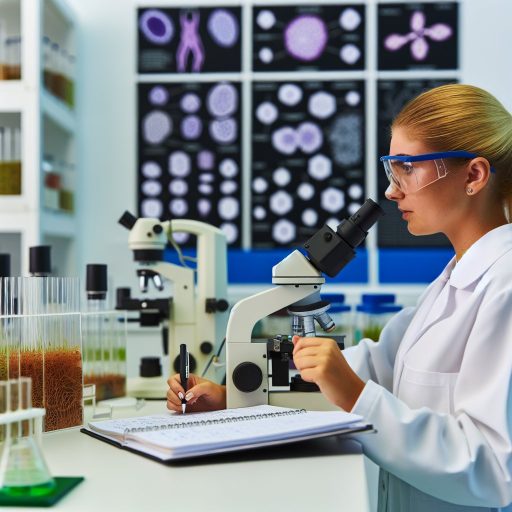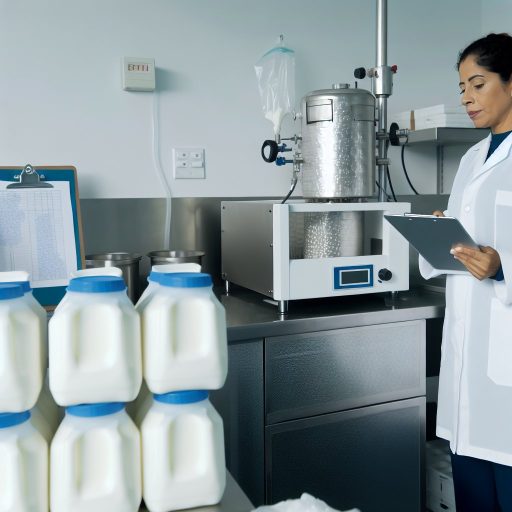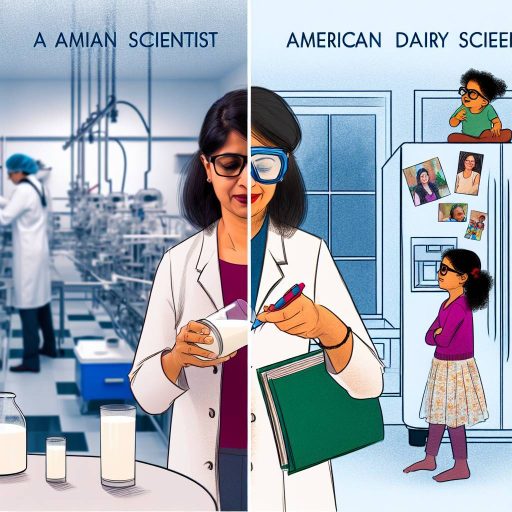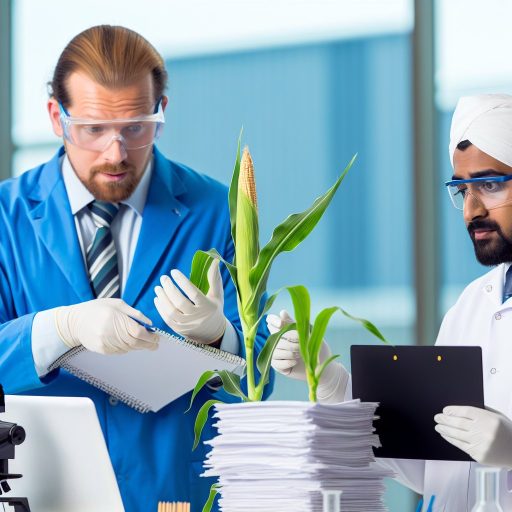Introduction:
Veterinary technicians play a crucial role in the animal healthcare industry by assisting veterinarians in various tasks.
As the field of veterinary medicine continues to grow, there is an increasing demand for qualified veterinary technicians to support these practices.
Current Trends in Veterinary Technician Employment:
Job growth for veterinary technicians is promising, with a projected growth rate of 16% from 2019 to 2029.
Veterinary technicians are increasingly specializing in areas such as emergency care, dentistry, and anesthesia, leading to higher demand for their specialized skills.
Veterinary practices are incorporating advanced technologies, creating a need for technicians with technical expertise to operate and maintain these tools.
Factors Driving Employment Opportunities:
The rising number of pet owners seeking healthcare services for their animals has driven the need for more veterinary technicians.
As governments introduce stricter regulations regarding animal welfare and healthcare standards, the demand for qualified technicians to ensure compliance has increased.
Veterinary practices are offering a broader range of services, including preventative care, diagnostics, and surgery, requiring a larger workforce of technicians to support these services.
Training and Education Requirements:
Veterinary technicians must complete an accredited program and pass a licensure exam to practice in the field.
Employers may require technicians to participate in ongoing training to stay up-to-date with advancements in veterinary medicine and technology.
Technicians can pursue specialized certifications in areas such as dentistry or anesthesia to enhance their skills and marketability in the field.
Career Outlook for Veterinary Technicians:
With the growing demand for veterinary technicians and the evolving nature of the field, individuals pursuing a career in this profession can expect a rewarding and dynamic career path.
This pathway is filled with opportunities for growth and advancement.
Job Growth in the Veterinary Technician Field
As the field of veterinary medicine continues to evolve, the demand for skilled veterinary technicians is on the rise.
Statistics on the Projected Growth of Veterinary Technician Jobs
- In recent years, the veterinary technician field has experienced steady growth.
- According to the Bureau of Labor Statistics, job opportunities for veterinary technicians are projected to increase by 16% from 2019 to 2029.
- This growth rate is much faster than the average for all occupations, highlighting the increasing need for veterinary healthcare services.
Factors Contributing to the Increase in Demand for Veterinary Technicians
- The growing pet population: As more households are welcoming pets into their families, the demand for veterinary services is also increasing.
- Advancements in veterinary medicine: With new technologies and treatment options becoming available, there is a greater need for skilled technicians to assist in providing care.
- Specialization in veterinary care: Veterinary practices are expanding their services to include specialties such as dentistry, oncology, and emergency care, creating more job opportunities for technicians.
- Regulatory changes: As the field of veterinary medicine evolves, there are stricter regulations in place, requiring more technicians to ensure compliance and high-quality care.
The job outlook for veterinary technicians is promising, with a positive growth trajectory expected in the coming years.
As the field continues to innovate and expand, the demand for skilled and dedicated professionals in this role will only continue to rise.
Veterinary technicians have a wide range of specialization opportunities available to them.
These specializations allow them to focus on particular areas of veterinary medicine.
They develop expertise in those areas.
Benefits of Specializing
- Increased job opportunities
- Higher earning potential
- Specialized knowledge and skills
- Greater job satisfaction
- Ability to work with specific types of animals
One popular specialization for veterinary technicians is in the area of emergency and critical care.
These technicians work in emergency veterinary hospitals and clinics.
Transform Your Career Today
Unlock a personalized career strategy that drives real results. Get tailored advice and a roadmap designed just for you.
Start NowThey provide care to animals in critical condition.
Another specialization option is in the field of anesthesia.
Anesthesia technicians work closely with veterinarians during surgery.
They ensure that animals are safe and comfortable throughout the procedure.
- They monitor vital signs
- Administer anesthesia
- Manage pain during surgery
- Assist with recovery
Some veterinary technicians choose to specialize in dentistry.
These technicians work with veterinarians to perform dental cleanings, extractions, and other procedures.
They maintain the oral health of animals.
There are also opportunities for veterinary technicians to specialize in behavior.
These technicians work with animals that have behavioral issues.
They help animals to overcome fear, aggression, and other behavioral problems.
- They create behavior modification plans
- Train animals and their owners
- Provide support and guidance
- Help improve the quality of life for the animals and their families
Veterinary technicians can also specialize in internal medicine.
They work with veterinarians to diagnose and treat diseases of the internal organs.
These technicians may perform diagnostic tests, administer medications, and provide care to animals with complex medical conditions.
Specialization in Veterinary Medicine
Specialization in a particular area of veterinary medicine can provide veterinary technicians with a rewarding and fulfilling career.
By focusing on a specific area, technicians can develop expertise and skills.
This leads to greater job opportunities and higher earning potential.
You Might Also Like: Irrigation Specialist: Job Description and Duties
Emerging Technologies in Veterinary Medicine
Impact of Advancements in Technology on Veterinary Technicians
Technology has revolutionized the field of veterinary medicine.
It shapes the way veterinary technicians work and provide care to animals.
From digital imaging to telemedicine, these technological advancements have improved efficiency and accuracy in diagnosing and treating animals.
Telemedicine allows veterinary technicians to consult with experts remotely.
Transform Your Career Today
Unlock a personalized career strategy that drives real results. Get tailored advice and a roadmap designed just for you.
Start NowThis provides better care for animals in rural areas.
Digital imaging technologies enable veterinary technicians to visualize internal structures of animals for accurate diagnosis.
Wearable technology helps veterinary technicians track animal behavior and health parameters.
Virtual reality simulations provide veterinary technicians with hands-on training in a safe environment.
These advancements empower veterinary technicians to deliver better care to animals.
They improve overall outcomes in veterinary medicine.
Innovative Tools and Equipment in Veterinary Practices
Innovative tools and equipment have transformed veterinary practices.
They enhance the capabilities of veterinary technicians in providing top-notch care.
Robotic surgery systems enable veterinary technicians to perform minimally invasive procedures.
These systems offer precision and efficiency.
Laser therapy tools help veterinary technicians manage pain and promote healing.
This is especially beneficial after surgery or injury in animals.
3D printing technology allows veterinary technicians to create customized prosthetics and models.
This aids in surgical planning.
Automated diagnostic machines provide rapid and accurate results for blood tests and urine analysis.
Digital recording systems streamline medical record-keeping.
They allow veterinary technicians to access patient information efficiently.
Mobile apps and software platforms assist veterinary technicians in managing schedules.
They also help in communicating with clients and tracking patient progress.
These innovative tools empower veterinary technicians to provide exceptional care.
Transform Your Career Today
Unlock a personalized career strategy that drives real results. Get tailored advice and a roadmap designed just for you.
Start NowThey lead to improved outcomes in veterinary medicine.
Gain More Insights: Best Practices for Livestock Artificial Insemination
Telemedicine and Remote Monitoring in Veterinary Care
Telemedicine is revolutionizing veterinary care by allowing veterinarians to remotely diagnose, treat, and monitor animals.
How Telemedicine is Changing Veterinary Care
Improved access to care: Telemedicine enables pet owners in remote areas to consult with veterinarians without having to travel long distances.
Convenience for pet owners: With telemedicine, pet owners can seek advice from veterinarians at any time, making it more convenient for them.
Reduced stress for animals: Avoiding unnecessary trips to the veterinary clinic can help reduce stress for pets, especially those who get anxious during car rides.
Cost-effective care: Telemedicine consultations are often more affordable compared to in-person visits, making veterinary care more accessible to pet owners.
Role of Veterinary Technicians in Remote Monitoring of Animals’ Health
Veterinary technicians play a crucial role in remote monitoring of animals’ health by:
- Educating pet owners: Veterinary technicians educate pet owners on how to use remote monitoring devices and interpret the data collected.
- Monitoring vital signs: Veterinary technicians monitor animals’ vital signs remotely and alert veterinarians of any abnormalities or concerns.
- Providing client support: Veterinary technicians offer support to pet owners by answering questions, providing guidance, and ensuring compliance with treatment plans.
- Collaborating with veterinarians: Veterinary technicians collaborate with veterinarians to analyze remote monitoring data and make informed decisions regarding the care of animals.
Telemedicine and remote monitoring are changing the landscape of veterinary care. Veterinary technicians play a crucial role in ensuring the well-being of animals in this new era of digital healthcare.
Delve into the Subject: The Impact of Climate on Grape Cultivation
Increased Awareness of Animal Welfare
With the rise in awareness of animal welfare, there has been a growing emphasis on the ethical treatment of animals in veterinary practices.
This trend has significant implications for the responsibilities of veterinary technicians, as they play a crucial role in ensuring the well-being and care of animals.
Discussion on the Growing Emphasis on Animal Welfare
In recent years, there has been a noticeable shift towards a greater focus on animal welfare in the veterinary field.
This change is driven by various factors, including increased public awareness of animal rights and the recognition of animals as sentient beings capable of feeling pain and suffering.
As a result, veterinary technicians are expected to not only provide medical care to animals but also to advocate for their well-being and promote ethical treatment practices.
This includes ensuring that animals are treated with compassion, respect, and dignity in all aspects of their care.
Furthermore, the emphasis on animal welfare extends beyond the physical health of animals to encompass their mental and emotional well-being as well.
Veterinary technicians are now being called upon to consider the holistic needs of animals and provide a supportive and nurturing environment for them.
Impact of this Trend on the Responsibilities of Veterinary Technicians
The increased awareness of animal welfare has led to a shift in the responsibilities of veterinary technicians.
They are now expected to not only be skilled in medical procedures and technical tasks but also to possess strong communication skills and a deep understanding of animal behavior and psychology.
Transform Your Career Today
Unlock a personalized career strategy that drives real results. Get tailored advice and a roadmap designed just for you.
Start NowVeterinary technicians are increasingly being tasked with educating pet owners about proper animal care, nutrition, and behavior to ensure that animals receive the best possible care at home.
They also play a key role in helping to identify and report cases of animal abuse or neglect, further emphasizing their role as advocates for animal welfare.
Additionally, veterinary technicians are instrumental in promoting preventive care measures, such as vaccinations, parasite control, and routine check-ups, to help improve the overall health and well-being of animals.
By taking a proactive approach to animal healthcare, veterinary technicians can contribute to reducing the incidence of preventable diseases and promote the long-term health of animals.
Gain More Insights: The Ethics of Insect Research: What You Need to Know
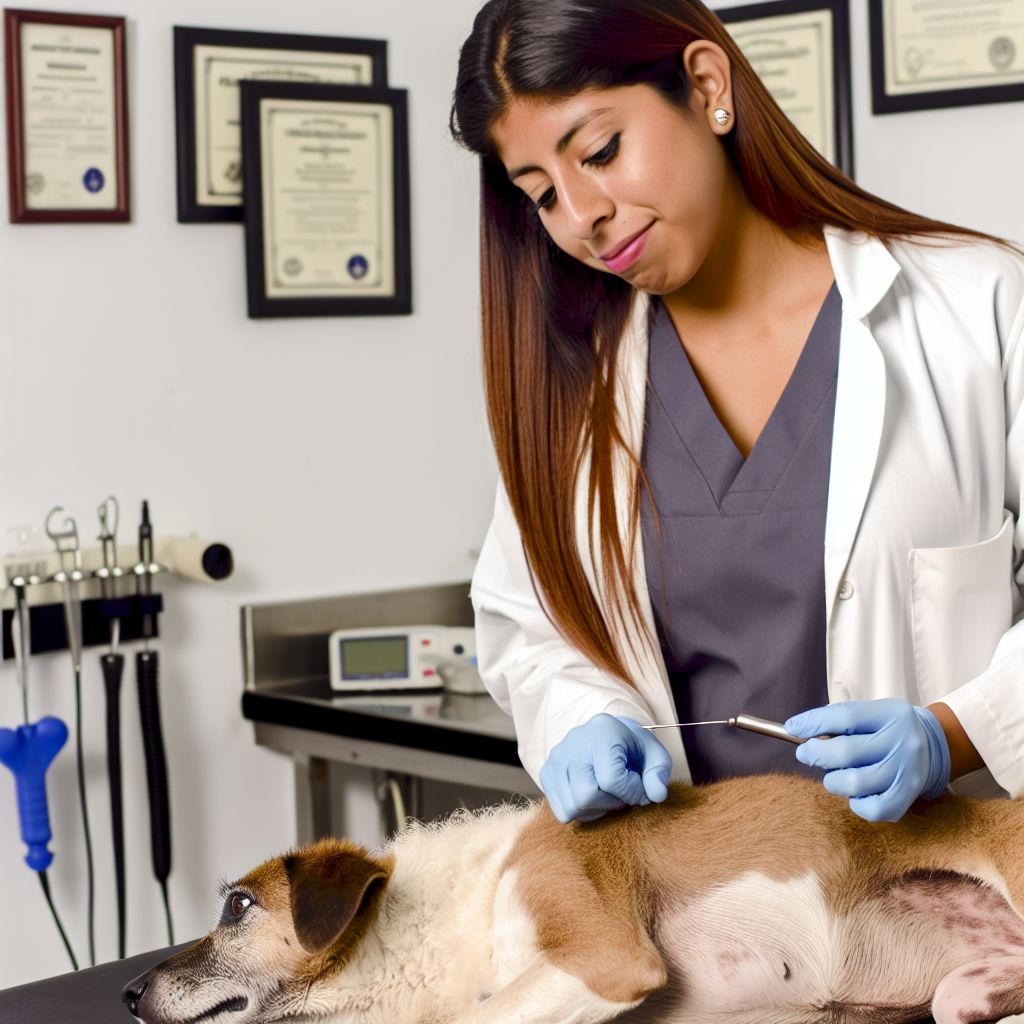
Importance of Work-Life Balance
Long hours and emotional stress can take a toll on veterinary technicians.
Balancing work and personal life can improve overall well-being and job satisfaction.
Prevents burnout, compassion fatigue, and mental health issues.
Strategies for Preventing Burnout
- Set boundaries with work hours and avoid taking work home.
- Practice self-care activities such as exercise, meditation, or hobbies.
- Take regular breaks during shifts to recharge and refocus.
- Seek support from colleagues, friends, or a therapist if needed.
Prioritizing Self-Care
- Schedule regular check-ups and prioritize physical health.
- Eat a balanced diet and stay hydrated throughout the day.
- Make time for activities that bring joy and relaxation.
- Practice mindfulness and stress management techniques.
Maintaining a healthy work-life balance is essential for veterinary technicians to thrive in their careers.
By implementing these strategies, they can prevent burnout, prioritize self-care, and ultimately improve their overall well-being.
Overview of Collaborative Care Models
Collaborative care models in veterinary practices involve integrating various healthcare providers such as veterinarians, veterinary technicians, and other specialists to create a well-rounded approach to patient care.
By working together, these professionals can leverage their unique skills and expertise to provide the best possible care for animals.
Benefits of Collaborative Care Models
- Improved patient outcomes: By working together, healthcare professionals can develop more effective treatment plans and interventions to address complex health issues in animals.
- Enhanced communication: Collaborative care models promote better communication among team members, leading to more coordinated and efficient care delivery.
- Increased job satisfaction: Working as part of a collaborative team can foster a sense of camaraderie and support among healthcare professionals, boosting morale and job satisfaction.
- Continuing education opportunities: Collaborative care models provide opportunities for ongoing learning and professional development as team members share knowledge and skills with one another.
Role of Veterinary Technicians in Interdisciplinary Healthcare Teams
Veterinary technicians play a crucial role in collaborative care models by providing support to veterinarians and other team members, as well as taking on various responsibilities to ensure the well-being of animals under their care.
Duties and Responsibilities of Veterinary Technicians in Interdisciplinary Teams
- Assisting with diagnostic procedures: Veterinary technicians help veterinarians with diagnostic tests and imaging procedures to assess the health status of animals.
- Administering medications: Veterinary technicians are responsible for administering medications to animals and monitoring their response to treatment.
- Providing nursing care: Veterinary technicians assist with the nursing care of animals, including wound care, bandage changes, and post-operative monitoring.
- Client education: Veterinary technicians educate pet owners on proper care and treatment plans for their animals, ensuring they have the knowledge and resources needed to support their pets’ health.
Veterinary technicians play a vital role in interdisciplinary healthcare teams by contributing their expertise and skills to provide comprehensive care for animals.
By embracing collaborative care models, veterinary practices can improve patient outcomes and enhance the overall quality of care provided to animals.
Implications of Changes in Veterinary Technician Employment
It is evident that the veterinary technician profession is experiencing significant changes in employment trends.
From the increasing demand for specialized skills to the shift towards preventive care, these trends are reshaping the industry.
Aspiring and current veterinary technicians must stay informed about these evolving trends to remain relevant in the field.
By adapting to the changing landscape of veterinary medicine, technicians can position themselves for long-term success and career growth.
It is crucial for veterinary technicians to continue their education, seek certification in specialized areas, and network within the industry.
Transform Your Career Today
Unlock a personalized career strategy that drives real results. Get tailored advice and a roadmap designed just for you.
Start NowBy staying proactive and flexible, veterinary technicians can navigate the shifting employment landscape and thrive in their careers.
Embracing these trends and being adaptable will ensure that veterinary technicians remain valuable assets in the ever-evolving field of animal care.
Additional Resources
[E-Books for Sale]
The Big Book of 500 High-Paying Jobs in America: Unlock Your Earning Potential
$19.99 • 500 High-Paying Jobs • 330 pages
Explore 500 high-paying jobs in America and learn how to boost your career, earn more, and achieve success!
See All 500 High-Paying Jobs of this E-Book
1001 Professions Without a Degree: High-Paying American Jobs You Can Start Now
$19.99 • 1001 Professions Without a Degree • 174 pages
Discover 1001 high-paying jobs without a degree! Unlock career tips, skills, and success strategies for just $19.99!

